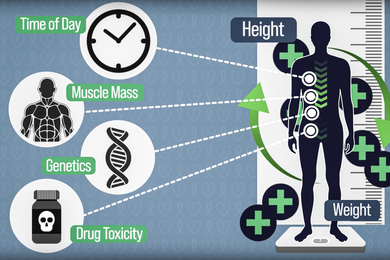Tall buildings will persist in high-density urban cores, but enthusiasm for "super-tall trophy towers" may soon wane, according to Professor William J. Mitchell, dean of the School of Architecture.
Since the Sept. 11 attack on New York's World Trade Center, the vulnerability of very high towers may be another deterrent to building new ones, Mitchell said.
Mitchell, author of the books "E-topia" and "City of Bits," acknowledged the symbolic power of "expensive, rare and conspicuous" structures in recent writing, including an article, "Do We Still Need Skyscrapers?" published in Scientific American.
"In the 21st century, as in the time of Cheops [a king of Egypt in the 26th century B.C.], there will undoubtedly be taller and taller buildings, built at great effort and without real economic justification. The rich and powerful will still find satisfaction in traditional ways of saying they're on top of the heap," Mitchell said.
Mitchell didn't dismiss skyscrapers as dinosaurs of urban design, but he noted how the digital revolution has created a "more mobile and connected workforce. When any place--from an airport lounge to a bench under a tree--can be a workplace, there is a lot less need for cubicle farms stacked up in towers."
In addition, urban planning and design considerations--long shadows, wind blasts, auto traffic and pedestrian congestion caused by very tall buildings--have led to limits on their height and bulk.
BIGGER, TALLER, BETTER
The design of ancient skyscraper equivalents, such as the Great Pyramid of Cheops (146 meters high), and even of pre-Renaissance buildings such as the spires of Chartres Cathedral (107 meters high), offered interior space scaled more for mice than men.
The Industrial Revolution opened up the interiors of tall towers so many people could fit inside. A hundred years' war of the tallest led to such trophy towers as New York's Chrysler Building and Empire State Building (381 meters), the Sears Tower in Chicago (443 meters) and the vanished World Trade Towers (417 meters). But the relatively new Petronas Twin Towers in Kuala Lampur, Malaysia--at 452 meters, the tallest buildings in the world--suggest the race is still on.
Even in New York City, development plans for new office towers and competition for control of $20 billion in construction funds are already underway.
THE SHORTEST TALL BUILDING
In contrast to the conspicuous consumption of urban air space stands the Microsoft Headquarters in Redmond, Wash. At a mere 20 meters high--less than half the height of the Great Mosque of Samarra, built in the ninth century--it represents a victory cheer to digital life and the digital workforce.
"Efficient telecommunications have diminished the importance of centrality and correspondingly increased the attractiveness of less expensive suburban sites that are more convenient to the labor force," Mitchell said.
Also, access to paper files in a central headquarters-type location is no longer necessary for workers or employers, thanks to digital storage and remote access to databases, he noted.
And Microsoft's low-rise home, while organic to its northwestern landscape, is not unique. Mitchell noted that some industrial corporations have also relinquished their hold on the urban skyline.
Chrysler Corp., for example, has moved to a campus setting outside Detroit rather than build a new edifice like its landmark building in New York City. And Sears has moved its Chicago workforce from its great 443-meter tower, built in 1974, to a suburban campus.
"That's a particularly telling straw in the wind," said Mitchell.
The swan song of skyscrapers is not necessarily sung only by the digital workforce, he said. Corporate marketing and public relations interests also may be better served by web sites than by the dominatingly sited urban tower.
"Nike's campus in Beaverton, Ore., is pretty hard to find, but www.nike.com is not. Microsoft and Netscape may battle it out from Washington and California, but few of their millions of customers know or care what the headquarters buildings look like," Mitchell said.
LIMITS OF DIGITAL WORK LIFE
However, Frank Levy, professor of urban economics, expressed doubts about the ability of telecommunications to substitute for people working in proximity to one another.
"There are two issues. The first is the limited bandwidth of most telecommunications compared to the information flow that passes between humans in conversation (including body language, tone of voice, facial expressions).
"The second is the way in which much important communication in workplaces occurs spontaneously. Security worries may shrink building sizes but I don't think it is possible to geographically disperse concentrations of people (like the financial types in Wall Street) without incurring real costs in terms of information exchange," Levy said.
Digital links don't substitute for face-to-face communication, Mitchell acknowledged. Nevertheless, just as breakthroughs of the Industrial Revolution made new buildings possible, breakthroughs of the digital revolution have made a new presence possible without buildings.
"Last week, I had to cancel travel to Utrecht and London, where I was to give public lectures. I substituted live two-way video links, with large-screen projection at the other end," Mitchell said by e-mail from his office at MIT.
A version of this article appeared in MIT Tech Talk on September 26, 2001.





